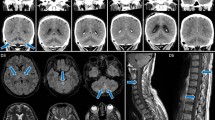Abstract
Human granulocytic anaplasmosis (HGA) is a tick borne infection caused by Anaplasma phagocytophilum. HGA cases in South Korea have been identified since the first report in 2014. In this study, we investigated the serological response in 594 clinical samples of patients with acute febrile illness and molecular characteristics of A. phagocytophilum clinical isolates obtained from HGA patients. In serological test for A. phagocytophilum, 7.91% (47/594 cases) were positive for IgG and Ig M and 13 of 47 cases showed seroconversion. In the detection rate of the 16S rRNA, msp2(p44), and ankA, genes were showed 3.68% (14/380 cases) for A. phagocytophilum-specific 16S rRNA gene. Phylogenetic analysis of three clinical isolates demonstrated high sequence similarity (98.58–100%) with A. phagocytophilum 16S rRNA sequences identified from public databases. Analysis of the msp2(p44) gene showed highly variable similarity rates (7.24–98.85%) even within isolated countries and host ranges. These results provide clues into the bacterial characterization of A. phagocytophilum originating from Korean patients, providing useful guidance for treatment and improving clinical outcomes.
Similar content being viewed by others
References
Atif, F.A. 2016. Alpha proteobacteria of genus Anaplasma (Rickettsiales: Anaplasmataceae): Epidemiology and characteristics of Anaplasma species related to veterinary and public health importance. Parasitol. 143, 659–685.
Battilani, M., Arcangeli, S.D., Balboni, A., and Dondi, F. 2017. Genetic diversity and molecular epidemiology of Anaplasma. Infect. Gen. Evol. 49, 195–211.
Blanco, J.R. and Oteo, J.A. 2002. Human granulocytic ehrlichiosis in Europe. Clin. Microbiol. Infect. 8, 763–772.
Brown, K.J., Lambin, X., and Hogen, N. 2009. Delineating Anaplasma phagocytophilum ecotypes in coexisting, discrete enzoonotic cycles. Emerg. Infect. Dis. 15, 1948–1954.
Dumler, J.S. 2012. The biological basis of severe outcomes in Anaplasma phagocytophilum infection. FEMS Immunol. Med. Microbiol. 64, 13–20.
Foley, J.E., Nietro, N.C., Barbet, A., and Folye, P. 2009. Antigen diversity in the parasitic bacterium Anaplasma phagocytophilum arises from selectively represented, spatially clustered functional pseudogenes. PLoS One 4, e8265.
Henningsson, A.J., Wilhelmsson, P., Gyllemark, P., Kozak, M., Matussek, A., Nyman, D., Ekerfelt, C., Lindgren, P.E., and Forsberg, P. 2015. Low risk of seroconversion or clinical disease in humans after a bite by an Anaplasma phagocytophilum-infected tick. Ticks Tick Borne Dis. 6, 787–792.
Heo, E.J., Park, J.H., Koo, J.R., Park, M.S., Park, M.Y., Dumler, J.S., and Chae, J.S. 2002. Serologic and molecular detection of Ehrlichia chaffeensis and Anaplasma phagocytophilia (human granulocytic ehrlichiosis agent) in Korean patients. Clin. Microbiol. 40, 3082–3085.
Kang, J.G., Ko, S., Kim, Y.J., Yang, H.J., Lee, H., Shin, N.S., Choi, K.S., and Chae, J.S. 2011. New genetic variants of Anaplasma phagocytophilum and Anaplasma bovis from Korean water deer (Hydropotes inermis argyropus). Vector Borne Zoonotic Dis. 11, 929–938.
Kang, J.G., Ko, S., Smith, W.B., Kim, H.C., Lee, I.Y., and Chae, J.S. 2016. Prevalence of Anaplasma, Bartonella and Borrelia species in Haemaphysalis longicornis collected from goats in North Korea. J. Vet. Sci. 17, 207–216.
Kim, K.H., Yi, J., Oh, W.S., Kim, N.H., Choi, S.J., Choe, P.G., Kim, N.J., Lee, J.K., and Oh, M.D. 2014. Human granulocytic anaplasmosis, South Korea, 2013. Emerg. Infect. Dis. 20, 1708–1711.
Lee, S.H., Park, S.Y., Jang, M.J., Choi, K.J., Lee, H.K., Cho, Y.U., Lee, Y.S., Kim, S.H., and Hwang, S.D. 2017. Case report: clinical isolation of Anaplasma phagocytophilum in South Korea. Am. J. Trop. Med. Hyg. 97, 1686–1690.
Massung, R.F., Levin, M.L., Munderloh, U.G., Silverman, D.J., Lynch, M.J., Gaywee, J.K., and Kurtti, T.J. 2007. Isolation and propagation of the Ap-Variant 1 strain of Anaplasma phagocytophilum in a tick cell line. J. Clin. Microbiol. 45, 2138–2143.
Oh, J.Y., Moon, B.C., Bae, B.K., Shin, E.H., Ko, Y.H., and Kim, Y.J. 2009. Genetic identification and phylogenetic analysis of Anaplasma and Ehrlichia species in Haemaphysalis longicornis collected from Jeju Island, Korea. J. Bacteriol. Virol. 39, 257–267.
Park, J.H., Heo, E.J., Choi, K.S., Dumler, J.S., and Chae, J.S. 2003. Detection of antibodies to Anaplasma phagocytophilum and Ehrlichia chaffeensis antigens in sera of Korean patients by western immunoblotting and indirect immunofluorescence assays. Clin. Diagn. Lab. Immunol. 10, 1059–1064.
Scharf, W., Schauer, S., Freuburger, F., Petrovec, M., Schaarschmidt-Kiener, D., Liebisch, G., Runge, M., Ganter, M., Kehl, A., Dumler, J.S., et al. 2011. Distinct host species correlate with Anaplasma phagocytophilum ankA gene clusters. J. Clin. Microbiol. 49, 790–796.
Strasek Smrdel, K., Biovec, A., Malvorh, T., Petrovec, M., Duh, D., and Avsic Zupanc, T. 2008. Detection of Anaplasma phagocytophilum in wild boar in Slovenia. Clin. Microbiol. Infect. 15, 50–52.
Wang, Y., Chen, C., and Zhang, L. 2013. Molecular characterization of Msp2/P44 of Anaplasma phagocytophilum isolated from infected patients and Haemaphysalis longicornis in Laizhou Bay, Shandong Province, China. PLoS One 8, e78189.
Zang, L., Wang, G., Liu, Q., Chen, C., Le, J., Long, B., Yu, H., Zang, Z., He, J., Qu, Z., et al. 2013. Molecular analysis of Anaplasma phagocytophilum isolated from patients with febrile disease of unknown etiology in China. PLoS One 8, e57155.
Zeidner, N.S., Burkot, T.R., Massung, R., Nicholson, W.L., Dolan, M.C., Rutherford, J.S., Biggerstaff, B.J., and Maupin, G.O. 2000. Transmission of the agent of human granulocytic ehrlichiosis by Ixodes spinipalpis ticks: evidence of an enzootic cycle of dual infection with Borrelia burgdorferi in Northern Colorado. J. Infect. Dis. 182, 616–619.
Author information
Authors and Affiliations
Corresponding authors
Rights and permissions
About this article
Cite this article
Lee, S.H., Park, S., Lee, Y.S. et al. Diagnosis and molecular characteristics of human infections caused by Anaplasma phagocytophilum in South Korea. J Microbiol. 56, 847–853 (2018). https://doi.org/10.1007/s12275-018-8385-8
Received:
Revised:
Accepted:
Published:
Issue Date:
DOI: https://doi.org/10.1007/s12275-018-8385-8




